It's an insightful and warm conversation that plays out in the depths of Somerset House where Fyodor Podgorny and Golan Frydman, the designers behind fashion label Fyodor Golan, invite me into their temporary studio while their usual one is undergoes renovation. Golan tells me they're arranging pre-collection production now, then beginning their main line production before moving onto designing the AW16 collection, which launches at London Fashion Week in February. Phew! The fashion wheel keeps on turning...
![2015-11-15-1447600055-7906518-IMG_6698.jpg]()
![2015-11-15-1447600087-8301669-IMG_6701.jpg]()
![2015-11-15-1447600127-43866-IMG_6700.jpg]()
![2015-11-15-1447600161-6518074-IMG_6699.jpg]()
![2015-11-15-1447600192-9824765-IMG_6716.jpg]()
Production at the Fyodor Golan studio
Fyodor points out very early in the conversation that the fashion industry has changed dramatically since their Fashion Fringe launch seven seasons ago. Their evolution as designers and as business owners has been just as dramatic. They began by making restrictive, complex couture and changed direction when they gained global attention and realised that one Fyodor Golan woman did not exist - there are many. She comes in all shapes, sizes and ages and she doesn't want to wear a corset. The philosophy of making their clothing lighter and easier sits well alongside two designers who are natural, pragmatic and thoughtful. Their customers speak, they listen.
![2015-11-15-1447600262-7692978-00070big_1.jpg]()
Fyodor Golan Fashion Fringe Winning Collection, 2011
Fyodor explains that the internet explosion and uptake of social media means that the old system of designers dictating whole customer 'looks' died with Instagram's birth and has fertilised the Fyodor Golan brand's growth. It's safe to say they are happy with fashion's democratisation and credit fashion bloggers and clients styling their own looks on social media as sources of inspiration, revealing their fashion personalities and breaking down the 'whole designer look' phenomenon.
They gain new clients across the globe who contact them directly for special one-off pieces or to purchase garments directly on the strength of an Instagram image. This is a powerful tool and leads us to contemplate whether the relentless pre-prescribed fashion industry collection schedule makes sense. Do they need it? As a small label they are still responsive and in touch with their clients and that is a strength and competitive advantage. Fyodor explains that he would love to make mini collections every three months, freeing them from the restrictive shackles of fashion's seasonal calendar. I notice from images and seeing first-hand the constructed textiles of their pre-collection that they are no less ambitious in terms of materials and concepts when creating their pre-collections, in contrast to some designers who approach these as "mainline lite" collections in terms of design and realisation. It's clear Fyodor Golan don't take short cuts and invest their energy into realising ideas, not churning out product. I admire them and I admire their ease and resolve. They know exactly why they are creating their collections, and it's not just for the sake of it or because the fashion calendar says it's time to churn another one out. They have recently launched resort S/S16, deciding to create one pre-collection per year instead of the standard two, in addition to their two mainline collections (Spring/Summer and Autumn/Winter) so that they can maintain some balance and not stretch themselves too thinly.
![2015-11-15-1447600376-287195-IMG_6750.jpg]()
Fyodor Golan Resort S/S16 postcards
This leads us to a discussion about the recent exit of Raf Simons and Alber Elbaz from their fashion design and creative directorships of Dior and Lanvin respectively. As admirers of both designers, Fyodor and Golan discuss the unrealistic expectations on such designers to conceive and oversee the execution of upwards of eight collections a year, plus accessories, fragrances and in some cases retail spaces. Being spread too thinly kills creativity. We know it and have experienced it. Golan wrestles with it when having to abandon concepts for collections part way through the development phase because he does not have the time and means to see them through. He talks of being forced to wade through admin work and arrange business transactions in order to meet responsibilities to staff and suppliers - people have to be paid on time - leaving his unrealised ideas lingering. It's a tough and bitter pill that leaves doubt in the mind of a designer as to whether they have accomplished what they set out to and whether their vision has evolved into full bloom. The idea of the creative exploration being curbed too soon is a brutal one, especially considering a collection takes up to six months to create and is presented in around 6 minutes on the runway. If you don't get to finish your sartorial sentence it's an all too abrupt ending.
Fyodor Golan have embraced technology and the changing fashion landscape more than most. By launching a smart phone skirt collaboration with Nokia Lumia and a Microsoft-powered runway show with an impressive pyramid installation displaying projections from Nokia Lumia cameras in the front row, they have been at the frontier of experimenting with how tech gadgets can interact with fashion. Their forays into combining fashion and technology have been facilitated by the Fashion Innovation Agency, spearheaded by FashionTech stalwart Matt Drinkwater.
![2015-11-15-1447600419-1189480-nokiafyodorgolan3dprintinginteractiveskirtlumia5.jpg]()
![2015-11-15-1447600454-2581529-Nokia2.jpg]()
![2015-11-15-1447600528-6648334-FyodorGolanNokia3.jpg]()
Fyodor Golan x Nokia Lumia smart phone skirt in collaboration with research and design studio Kin (Photo by Ben A. Pruchnie/Getty Images)
![2015-11-15-1447600595-6605606-2.FGXMICROSOFTSS15createddigitalinvertedpyramidforLFWcatwalkshow.jpg]()
![2015-11-15-1447600639-332918-FyodorGolanMicrosoft4.jpg]()
![2015-11-15-1447600670-1794772-Kin_FG_01.jpg]()
FG x Microsoft + Nokia Lumia
Both designers are at ease combining fashion and technology, but also recognise its current limitations. The limitations they cite come as a shock. Where previously I believed the lack of collaboration between technology and fashion designers lay with the designers' lack of affinity for tech or a mismatch between the tech and the textiles or aesthetics, what it truly comes down to (at least in part) is the insistence on a new product outcome within a very short and strict timeframe. One year to innovate and create a whole new fashion tech product? "How is that possible?" asks Golan. The expectation of technology companies during pre-collaboration discussions with Fyodor Golan has been to create a new tech-driven product to sell within 12 months. There appears to be a lack of appetite for experimentation for its own sake and for exploring long-term, ambitious and integrated fashion tech innovations in this collaborative environment. Maybe that's why fashion and technology aren't integrating seamlessly and desirably yet - at least in the wearables space.
Fyodor and Golan are experimenters with spirit. They have a penchant for grabbing familiar references and layering textiles in a way that captures the imagination. Their clothes are bright, bold, fun and attractive. They're highly tactile and attention grabbing. It's hard to imagine not feeling happy and celebratory wearing their printed, vinyl, ruffled neoprene shift dress with neon trims. It's a recognisable silhouette, making it firmly wearable, but it's shaken off any shift-dress dowdiness by way of neon trims and chunky metal zips and the unexpectedly successful pairing of roses, ruffles and neoprene. SOLD!
![2015-11-15-1447600830-2118249-IMG_6704.jpg]()
![2015-11-15-1447600859-1326433-IMG_6706.jpg]()
Their latest SS16 collection, which launched at London Fashion Week, evolved out of an existing collaboration with toy maker Hasbro. The designers used My Little Pony as inspiration for their A/W15 'Rainbow Wheels' collection and when offered the chance to delve into the Hasbro Transformer archives for S/S16 they grabbed it.
![2015-11-15-1447600902-4249217-FyodorGolan_AW15_020.jpg]()
![2015-11-15-1447600941-6001027-FyodorGolan_AW15_021784x523.jpg]()
![2015-11-15-1447600967-4555608-my_little_pony_sabor_abbigliamento_licenzatario.jpg]()
A/W 15 collection in stores now
Unfortunately I'm not able to view and publish those original images, suffice to say that the bright colours and bold transformative nature of Transformers comes through at least in the spirit of the collection, and through the Transformer-inspired prints on sweatshirts. Being in the priviledged position of seeing never before published Transformer sketches the collection spontaneously erupted into a cacophony of colour and graphics.
![2015-11-15-1447601021-4348300-IMG_6711.jpg]()
Golan and the 'front row' Transformer
![2015-11-15-1447601062-3127017-IMG_6715.jpg]()
FG x Kat Maconie S/S 16
A smattering of Geisha-inspired silhouettes and accessories (the shoes were a collaboration with Kat Maconie) give gravity to the playful colours and prints. The indigo pieces are a personal favourite and appear to ground the collection amongst the flurry of digital prints, vinyl and colour.
![2015-11-15-1447601138-4117876-3.jpg]()
![2015-11-15-1447601172-3516778-8.jpg]()
![2015-11-15-1447601200-8884817-9.jpg]()
![2015-11-15-1447601233-8682330-33.jpg]()
![2015-11-15-1447601262-6837980-30.jpg]()
![2015-11-15-1447601290-8097146-25.jpg]()
![2015-11-15-1447601330-9698756-15.jpg]()
![2015-11-15-1447601361-3526348-22.jpg]()
![2015-11-15-1447601439-7197200-IMG_6702.JPG]()
![2015-11-15-1447601549-6178074-IMG_6675.JPG]()
![2015-11-15-1447601506-5845027-IMG_6621.JPG]()
![2015-11-15-1447601589-3308110-IMG_6948.JPG]()
S/S 16 London Fashion Week Show
Fyodor Golan is the unexpected. The designers themselves define it as 'a spirit'. I define it as a breath of fresh air. They're as candid as their clothes. And that's rare.
Header Image: Noctismag
Follow me: Twitter @Thetechstyler and Instagram @techstyler
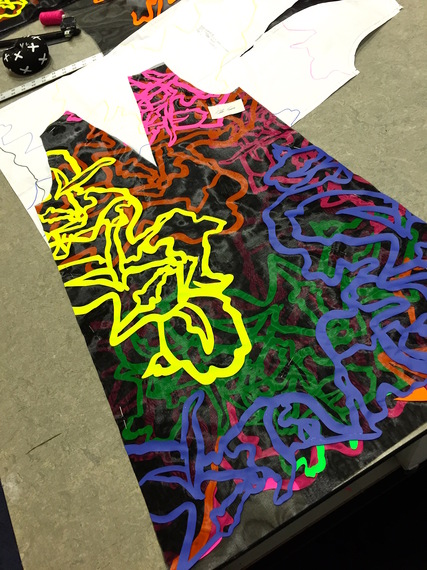
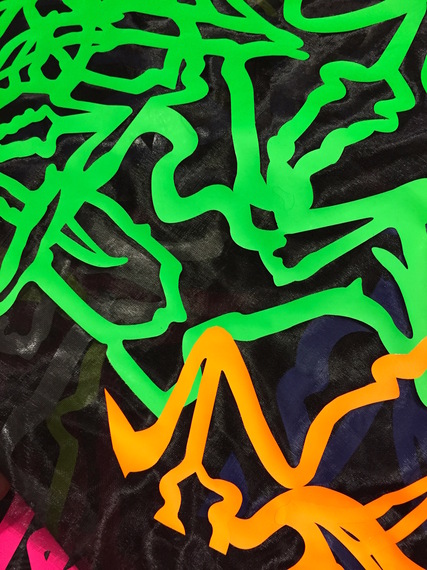
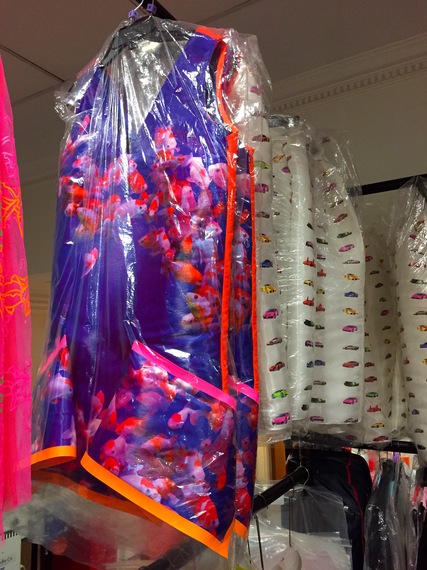

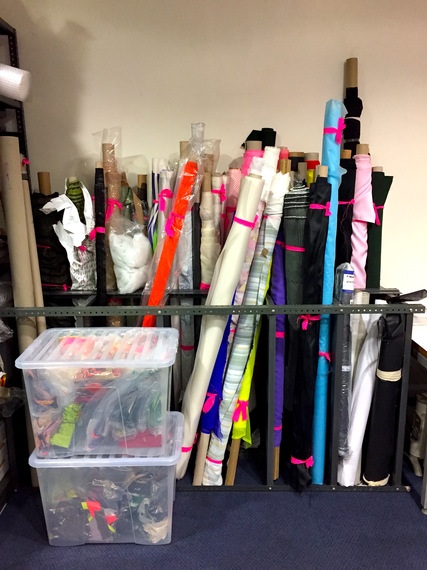
Fyodor points out very early in the conversation that the fashion industry has changed dramatically since their Fashion Fringe launch seven seasons ago. Their evolution as designers and as business owners has been just as dramatic. They began by making restrictive, complex couture and changed direction when they gained global attention and realised that one Fyodor Golan woman did not exist - there are many. She comes in all shapes, sizes and ages and she doesn't want to wear a corset. The philosophy of making their clothing lighter and easier sits well alongside two designers who are natural, pragmatic and thoughtful. Their customers speak, they listen.
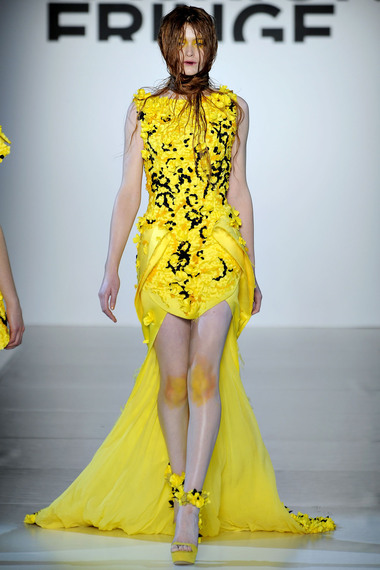
Fyodor explains that the internet explosion and uptake of social media means that the old system of designers dictating whole customer 'looks' died with Instagram's birth and has fertilised the Fyodor Golan brand's growth. It's safe to say they are happy with fashion's democratisation and credit fashion bloggers and clients styling their own looks on social media as sources of inspiration, revealing their fashion personalities and breaking down the 'whole designer look' phenomenon.
They gain new clients across the globe who contact them directly for special one-off pieces or to purchase garments directly on the strength of an Instagram image. This is a powerful tool and leads us to contemplate whether the relentless pre-prescribed fashion industry collection schedule makes sense. Do they need it? As a small label they are still responsive and in touch with their clients and that is a strength and competitive advantage. Fyodor explains that he would love to make mini collections every three months, freeing them from the restrictive shackles of fashion's seasonal calendar. I notice from images and seeing first-hand the constructed textiles of their pre-collection that they are no less ambitious in terms of materials and concepts when creating their pre-collections, in contrast to some designers who approach these as "mainline lite" collections in terms of design and realisation. It's clear Fyodor Golan don't take short cuts and invest their energy into realising ideas, not churning out product. I admire them and I admire their ease and resolve. They know exactly why they are creating their collections, and it's not just for the sake of it or because the fashion calendar says it's time to churn another one out. They have recently launched resort S/S16, deciding to create one pre-collection per year instead of the standard two, in addition to their two mainline collections (Spring/Summer and Autumn/Winter) so that they can maintain some balance and not stretch themselves too thinly.
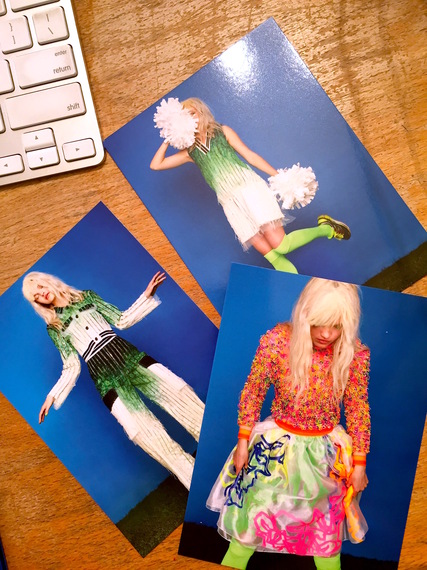
This leads us to a discussion about the recent exit of Raf Simons and Alber Elbaz from their fashion design and creative directorships of Dior and Lanvin respectively. As admirers of both designers, Fyodor and Golan discuss the unrealistic expectations on such designers to conceive and oversee the execution of upwards of eight collections a year, plus accessories, fragrances and in some cases retail spaces. Being spread too thinly kills creativity. We know it and have experienced it. Golan wrestles with it when having to abandon concepts for collections part way through the development phase because he does not have the time and means to see them through. He talks of being forced to wade through admin work and arrange business transactions in order to meet responsibilities to staff and suppliers - people have to be paid on time - leaving his unrealised ideas lingering. It's a tough and bitter pill that leaves doubt in the mind of a designer as to whether they have accomplished what they set out to and whether their vision has evolved into full bloom. The idea of the creative exploration being curbed too soon is a brutal one, especially considering a collection takes up to six months to create and is presented in around 6 minutes on the runway. If you don't get to finish your sartorial sentence it's an all too abrupt ending.
Fyodor Golan have embraced technology and the changing fashion landscape more than most. By launching a smart phone skirt collaboration with Nokia Lumia and a Microsoft-powered runway show with an impressive pyramid installation displaying projections from Nokia Lumia cameras in the front row, they have been at the frontier of experimenting with how tech gadgets can interact with fashion. Their forays into combining fashion and technology have been facilitated by the Fashion Innovation Agency, spearheaded by FashionTech stalwart Matt Drinkwater.

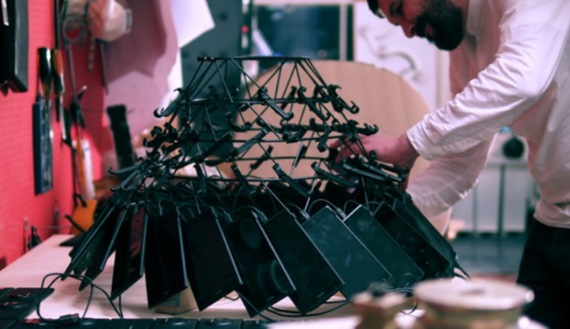
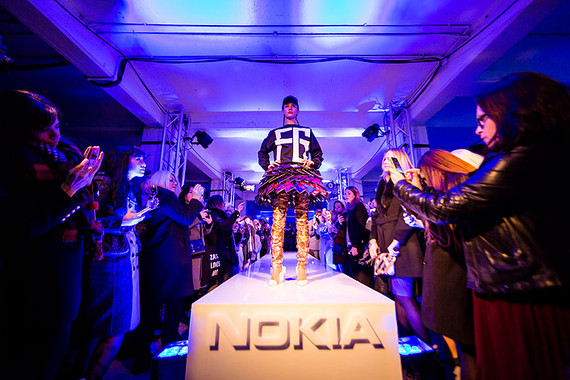
Fyodor Golan x Nokia Lumia smart phone skirt in collaboration with research and design studio Kin (Photo by Ben A. Pruchnie/Getty Images)
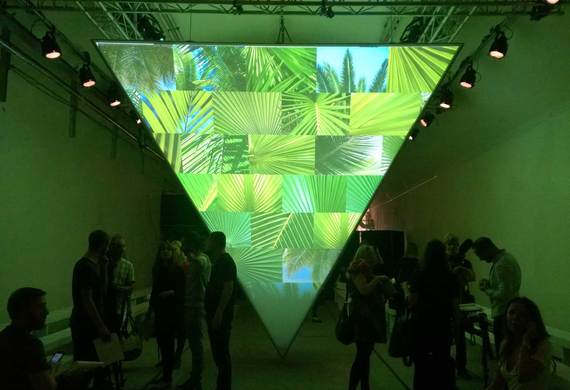
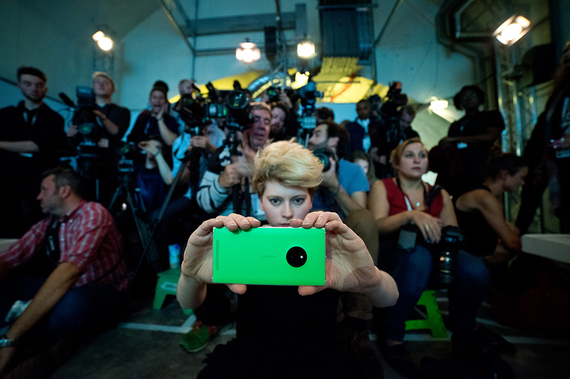

Both designers are at ease combining fashion and technology, but also recognise its current limitations. The limitations they cite come as a shock. Where previously I believed the lack of collaboration between technology and fashion designers lay with the designers' lack of affinity for tech or a mismatch between the tech and the textiles or aesthetics, what it truly comes down to (at least in part) is the insistence on a new product outcome within a very short and strict timeframe. One year to innovate and create a whole new fashion tech product? "How is that possible?" asks Golan. The expectation of technology companies during pre-collaboration discussions with Fyodor Golan has been to create a new tech-driven product to sell within 12 months. There appears to be a lack of appetite for experimentation for its own sake and for exploring long-term, ambitious and integrated fashion tech innovations in this collaborative environment. Maybe that's why fashion and technology aren't integrating seamlessly and desirably yet - at least in the wearables space.
Fyodor and Golan are experimenters with spirit. They have a penchant for grabbing familiar references and layering textiles in a way that captures the imagination. Their clothes are bright, bold, fun and attractive. They're highly tactile and attention grabbing. It's hard to imagine not feeling happy and celebratory wearing their printed, vinyl, ruffled neoprene shift dress with neon trims. It's a recognisable silhouette, making it firmly wearable, but it's shaken off any shift-dress dowdiness by way of neon trims and chunky metal zips and the unexpectedly successful pairing of roses, ruffles and neoprene. SOLD!

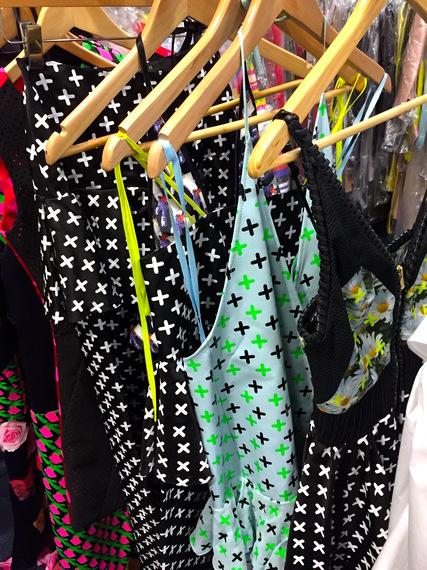
Their latest SS16 collection, which launched at London Fashion Week, evolved out of an existing collaboration with toy maker Hasbro. The designers used My Little Pony as inspiration for their A/W15 'Rainbow Wheels' collection and when offered the chance to delve into the Hasbro Transformer archives for S/S16 they grabbed it.
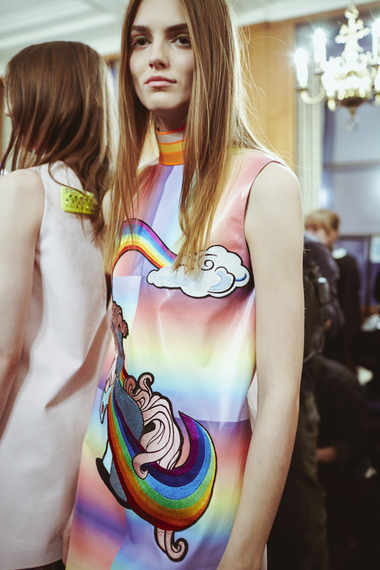
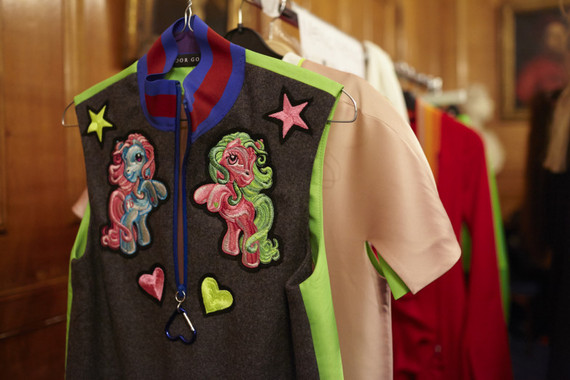
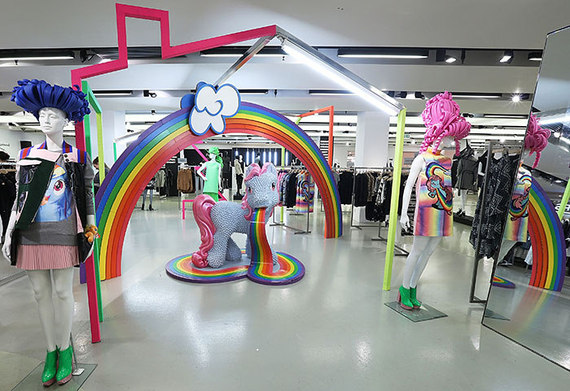
Unfortunately I'm not able to view and publish those original images, suffice to say that the bright colours and bold transformative nature of Transformers comes through at least in the spirit of the collection, and through the Transformer-inspired prints on sweatshirts. Being in the priviledged position of seeing never before published Transformer sketches the collection spontaneously erupted into a cacophony of colour and graphics.
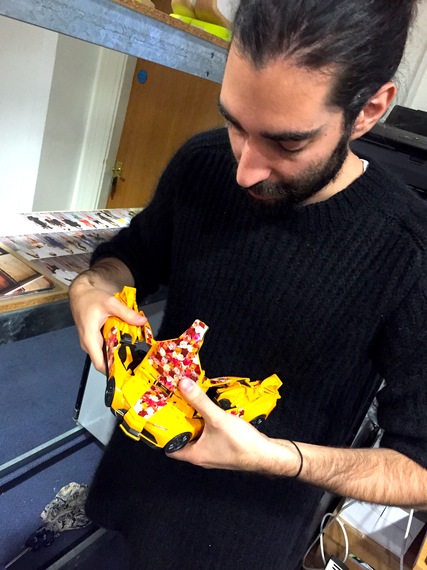
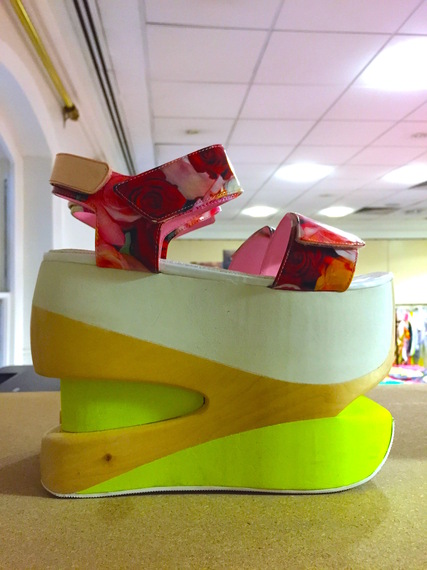
A smattering of Geisha-inspired silhouettes and accessories (the shoes were a collaboration with Kat Maconie) give gravity to the playful colours and prints. The indigo pieces are a personal favourite and appear to ground the collection amongst the flurry of digital prints, vinyl and colour.
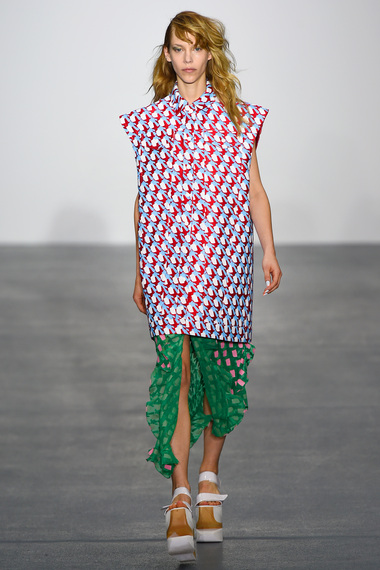
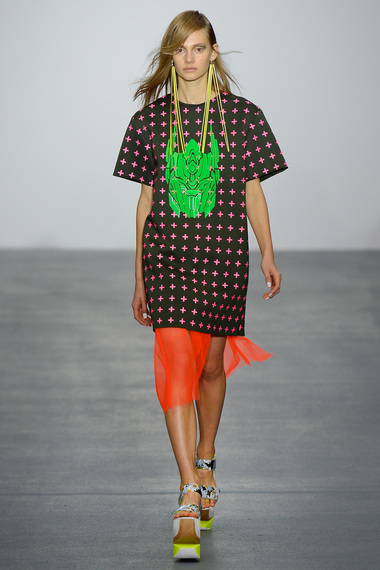
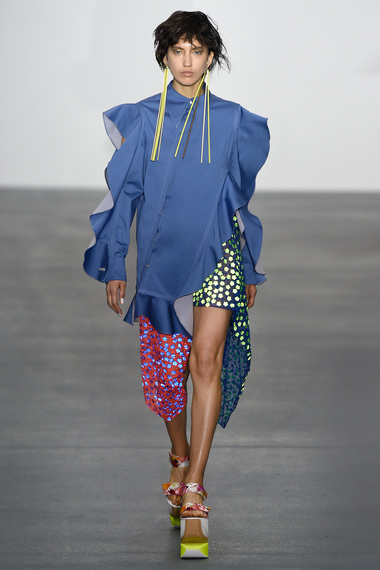
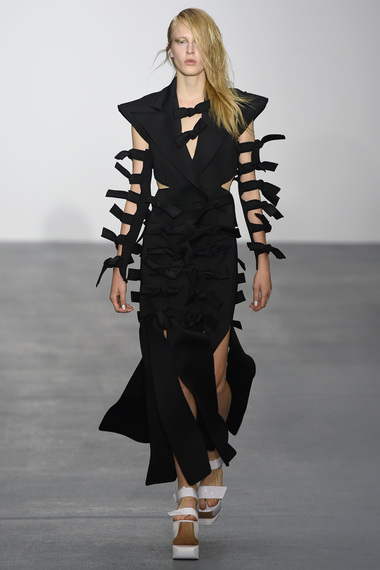
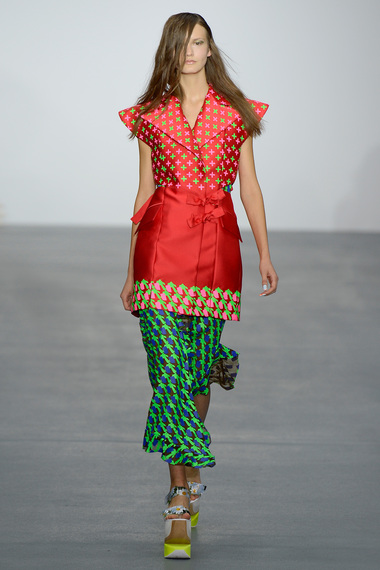
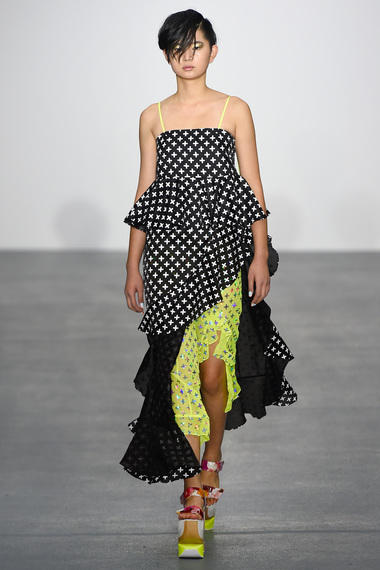
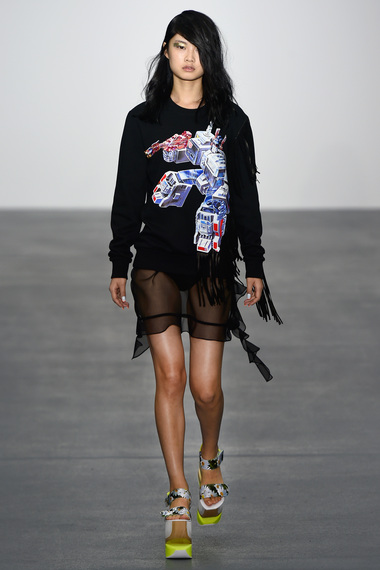
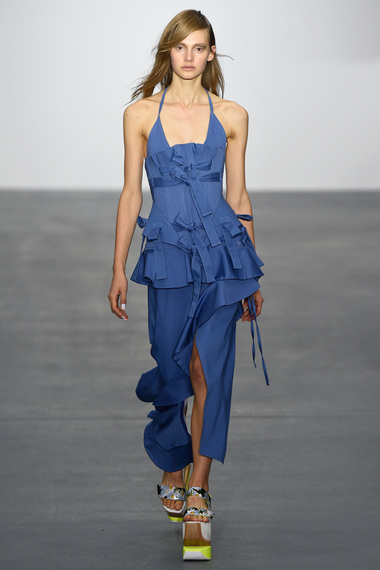
Fyodor Golan is the unexpected. The designers themselves define it as 'a spirit'. I define it as a breath of fresh air. They're as candid as their clothes. And that's rare.
Header Image: Noctismag
Follow me: Twitter @Thetechstyler and Instagram @techstyler

















